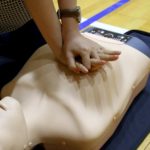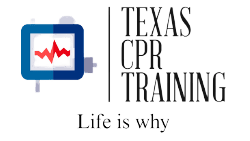Should you give CPR to Someone Having a Heart Attack?
When someone suffers from a sudden heart attack, it is essential to first call for emergency services and then begin first aid measures as soon as possible. In most cases, the victim gets immediately transferred to the hospital to receive the required care, but until the help arrives, bystanders need to keep observing the patient’s condition. If they are fully conscious and breathing on their own, they do not need CPR.
You should only do CPR if the person goes into cardiac arrest, not someone going through a heart attack. The information below will give you all the details on how to start and how long you need to continue providing CPR in case of an emergency.

The Difference Between Cardiac Arrest and Heart Attack
In cardiac arrest, the heart is not functioning. This means that it does not beat or pump blood to the body. In this situation, the blood stops circulating in the body, and the oxygen level in the bloodstream drops. When the oxygen level drops, the cells in the brain start to suffer damage and the person experiencing cardiac arrest can become unconscious within seconds.
On the other hand, a heart attack is caused by a blockage in the coronary arteries. A blockage can cause a clot to form in the artery, which will stop or slow down the blood flow. When the blood flow stops, the heart has to work harder to pump blood around the blocked vessels, resulting in a heart attack.
Symptoms of Heart Attack vs. Cardiac Arrest
Common Heart Attack Symptoms:
- Chest Pain or discomfort
- Shortness of breaths or trouble breathing
- Nausea, vomiting, or lightheadedness
- Stomach discomfort
- Weakness or pain in the arms, shoulders, back, neck, jaw, or stomach
Common Cardiac Arrest Symptoms:
- No Pulse
- Loss of consciousness
- Difficulty breathing
- Chest pain
- Heart palpitations
So What to Do If Someone Has a Heart Attack?
As you can notice from symptoms for both conditions, they’re mostly the same; the major difference is loss of consciousness. So if the person is talking and breathing fine, then you don’t need to administer CPR. Once you’ve called emergency services, as first aid measures, try doing the following:
- Ask them to chew an aspirin if they’re not allergic to it or advised by the doctor not to take it.
- If they’re prescribed nitroglycerin, give it to them along with aspirin. Make sure not to use anyone else’s nitroglycerin, only the one they have.
- Monitor them closely, encourage them to take slow and deep breaths and remain calm
- If they get unconscious, only then start with the CPR.
How to Do CPR If Someone Suffering From Heart Attack Becomes Unconscious?
The key to doing CPR is to have the victim in a position that allows you to do it easily and ensure their air passage is open. You should do the following steps:
- Get the victim to lie flat on their back.
- Raise their head and shoulders about 30 degrees.
- Check for breathing signs by placing your ear to their nose and mouth and listening for breathing. If you don’t hear anything or if they’re taking occasional gasps, you need to start CPR right away.
- Starting CPR; Put your hands on top of each other, place them on the center of their chest, and start pressing down fast and hard at the rate of 100-120 pushes per minute. After every push, let the chest rise up before pushing down again.
- According to American Heart Association, you can adjust the pace of pushing to the beat of the song ‘Staying Alive’. (source)
This method is Hands-Only. It doesn’t involve breathing into the person’s mouth. Keep performing the CPR until professional help arrives.
Why Don’t You Give CPR to Someone Going Through a Heart Attack?
If you see someone suffering from a heart attack, you should call for emergency services. They will take the victim to the hospital. You should not try to give CPR to someone who is going through a heart attack because it will not help.
The purpose of CPR is to revive the person’s heart giving it enough energy to start pumping on its own; like a jump start for car batteries. Someone who’s going through a heart attack has an active heart; it doesn’t need resuscitating. However, the person should still be transported to the hospital immediately.
If you see them going unconscious and they are not responding to your shouts or touch, that’s when you can start administering CPR.
What’s The Best Time to Start CPR?
AS SOON AS POSSIBLE! If you start CPR right away, the chances of saving the victim’s life are much higher. However, be sure to first call for professional help and ensure they need CPR because, as mentioned above, a heart attack doesn’t require it.
How Long Should I administer CPR?
Once you’ve called for help and started administering CPR, you should keep doing it until professionals arrive and take over or the affected person starts showing signs of improvement. If you see them regaining consciousness, that’s when you can stop CPR; here are the signs to look for:
- They start coughing
- They start opening their eyes
- They start moving or speaking
- Their breathing becomes normal
If the affected person is normally breathing, but still unconscious, put them into the recovery position and monitor their condition until help arrives.
Parting Words
It’s important to know the difference between a heart attack and cardiac arrest. The symptoms of a heart attack are similar to those of a cardiac arrest, but they’re not the same thing. Before anything else, call for professional help and then see if the affected person is conscious and breathing or not. If not, only then start administering CPR.
Knowing how to deliver first aid is one of the most important skills you can have. As such, choosing the right course that will teach you the basics is critical.
Texas CPR Training also offers comprehensive, hands-on First Aid and CPR training. For those who’re interested in learning more and potentially saving lives, we offer a number of courses that take you from basics to the advance techniques of managing injuries and saving lives. With proper training, you’ll be well-prepared to handle any emergency situation.
In the Dallas, Texas area register for a blended class at https://texascpr.com/cpr-and-first-aid-training-of-dallas/
Out of state register for a Virtual CPR, First Aid, AED class at https://texascpr.com/virtual-heartsaver-courses/
